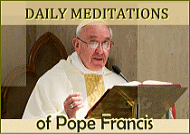CORPUS CHRISTI
The blood transfusion
Shortly after undergoing major surgery, a woman decided to put her thoughts in writing. She wrote: ‘When someone said that when Jesus referred to the Passover wine as his blood, and then shared it with his disciples, he was being cannibalistic, I could not help thinking of the modern practice of giving blood transfusion. While it isn’t eaten, the blood is definitely taken into the body in a life-giving way. After surgery I had a vivid experience of this type of life-receiving from a blood transfusion. All day in the recovery room, my only conscious feeling was the awful coldness, in the middle of summer. Nothing seemed to bring warmth to my body. I was inert and completely uninterested in anything going on around me. I was finally aware of a timing of two hours which seemed to be the time taken for the careful dripping of this blood into my veins. Suddenly, I felt warmth pour over me right to my fingertips and to the end of my toes. I seemed to come up from the bottom of the sea. I felt like smiling and greeting someone. I opened my eyes. The first thing I did was to find a clock. I was amazed that it was nearly midnight and I was elated to think I was alive and warm and happy. Then I saw the doctor and I couldn’t help joking with him about keeping such awful hours. I heard him say, ‘Now you can go home,’ so everything was all right. Later, I felt I would give anything I own ‘anything’ – to find the stranger whose blood had brought this warmth, this life to me. Now I walk the streets, grateful to some unknown person whose very blood flows in my veins and contributes to my daily joy. This is a debt I can never repay.’
Luke places the multiplication scene at the climax of Jesus’ Galilee ministry. Luke as well as all the evangelists highlight the Eucharistic dimension of the multiplication. Whereas on Holy Thursday we celebrated the origin of the Eucharist, today’s feast is a celebration of and an act of faith in the presence of the Risen Christ in our midst in this sacrament. As we have seen, all the three readings today are about meals ‘Abram’s victory meal, the Last Supper, and the feeding of the multitude. All refer to a ‘meal’ that goes beyond people’s hunger for material food, to spiritual nourishment.
May the Eucharist make us a sharing people, caring for others!
St. Mother Theresa chose to cater to the needs of a miserable beggar on the roadside rather than go and meet the Holy Father with whom she had a prior appointment. When asked by she did not choose to meet the Vicar of Christ, the Mother replied, “I met Christ on the way, I did not feel the need to meet the Vicar of Christ.”
Mother Theresa could see and touch the living body and blood of Jesus in the dying and the destitute because of the generosity of her heart to love the poorest of the poor. Today’s feast of Corpus Christi reveals to us how generously Jesus has given himself for the salvation of the world and invites us to reflect on our own approach to generosity. The readings provide us with three approaches to which we add one more approach adopted by our Savior:
1. Generosity with RESPECT: the 1st reading tells us that Melchizedek, the priest of God, offered bread and wine, and blessed Abraham after he rescued Lot from the hands of his enemies. Abraham too offered him the tithe of his income. In both the offerings there is a real sense of respect for the recipients of the offering. Such an act of generosity becomes more meaningful than an act of generosity out of duty or fear.
2. Generosity with FELLOWSHIP: St. Paul shares with the Corinthians what was revealed to him by the Lord. It is our of the sense of fellowship with his brethren that St. Paul urges them to partake of the great mystery of the Holy Eucharist. Such an act of generosity leads to prosperity of the community and helps to build the mystical body of Christ, namely, the Church.
3. Generosity with COMPASSION: In the Gospel we hear of the miracle of the multiplication of the loaves by Jesus. The Gospel parallel of this passage in Matthew 14:14 states, ‘He had compassion on them and he healed many of them.’ This compassion is seen in Jesus’ act of a) asking the disciples to give them something to eat, b) making the people sit in groups of fifty, c) blessing the food, d) giving the food to the disciples to be distributed to the crowd, and finally e) collecting the left-over. Such an act of generosity is not lavish spending of the resources available but dispensing them as a steward for the well-being of a wider community.
4. Generosity with SELF-SACRIFICE: the feast of the Body an Blood of Christ unfolds the noblest aspect of generosity. Jesus went to the extreme of breaking his body and shedding his blood for the well- being of the whole human race. This act of generosity with self-sacrifice sees only the good of the others at the cost of a price to be paid by oneself. Here we do not adore the sacred species alone but the Lord who has left a visible sign of his love and self-sacrifice.
Let us always receive the Body and Blood of Jesus with great love, respect and faith. He gave us His body and blood because He loves us till the end. The little that I and you can do is to receive Him well. While we receive the precious Body and Blood of Jesus Christ, we use our whole being and senses:
We come to receive Him because we have listened to his invitation.
We look (eyes, sight)
We respond (mouth, sound)
We receive (hand or mouth, touch)
We eat (taste)
Thus the Lord comes to us wholly in our Thoughts, Begin,Body and Heart.
– Look up to Jesus
– Say our Amen with faith and love
– Receive him well on our tongue or on the palm of our hand
Today, Jesus comes to each one of us through the Body and Blood through the hands of the Priest, let us pray for each priest in the world who bring Jesus to us daily. Let us pray that more vocation to this priestly life, so that Jesus will ever be present in the world. Let us also pray for all the Extra ordinary ministers of distribution of Holy Communion; who assist the priest in giving us Jesus here in the Church and to all our home bound.
When Jesus went back to Heaven He didn’t want to leave us all alone, so He gave Himself to us in the Holy Eucharist. First He gave Himself to the Apostles at the Last Supper, and today He gives Himself to us in Holy Communion.
Normally when we eat something it gets absorbed into our body. But receiving Jesus in Holy Communion does something different. It makes us more into Jesus’ Body! It bring s our soul closer to God and closer to all the other people in the Church. That’s what “Communion” means.
When we go to Communion in a state of grace we can get so much more grace from God. Our venial (small) sins can be taken away and we can get more strength to do His will. In fact, the time that your prayers are the most powerful is right after you receive Holy Communion, when Jesus is right inside you. He is your closest friend and only wants what is good for you. When you go to Communion remember Who you just received and don’t forget to thank Him for coming to You!
——————-
REAL FOOD AND REAL DRINK
This is a feast much desired by St Juliana, an Augustinian nun of Belgium who lived in 1183. Our Lord appeared to this holy nun and ratified her wish. He entrusted to her the work of establishing a feast in honor of his Most Holy Body and Blood. In 1264 Pope Urban IV instituted the Feast Corpus Christi to be celebrated following Trinity Sunday.
The Catholic Church believes firmly that the Bread and Wine offered at the Holy Mass turns into the Body and Blood of Jesus Christ, our Lord and Savior. It is not only simply a doctrine of faith, it is also proved beyond any understanding that numerous miracles have been witnessed by the Church for many centuries.
In John 6:55, Jesus says, “My Body is real food, and my Blood is real drink.
This saying has been proved in the life of Stigmatist Theresa Neumann, who lived between 1898-1962 in Germany.
Theresa lived only on Holy Communion for 40 long years from 1922 – 1962. And who gave her the Sacred Host? The Lord Jesus himself brought her the Eucharistic Bread. Many priests and even Bishops have borne witness to this fact.
We all expect that a person who receives Holy communion and eats nothing else will soon lose weight and die of starvation but, no!! she gained weight during those 40 years. The actual body weight of Theresa during these years were 1927- 55 kg, 1935- 63 kg; 1945 – 84 kg; 1950- 90 kg; 1953- 106. 5 kg.
Fr. Franco Pereira, S.D.B.


